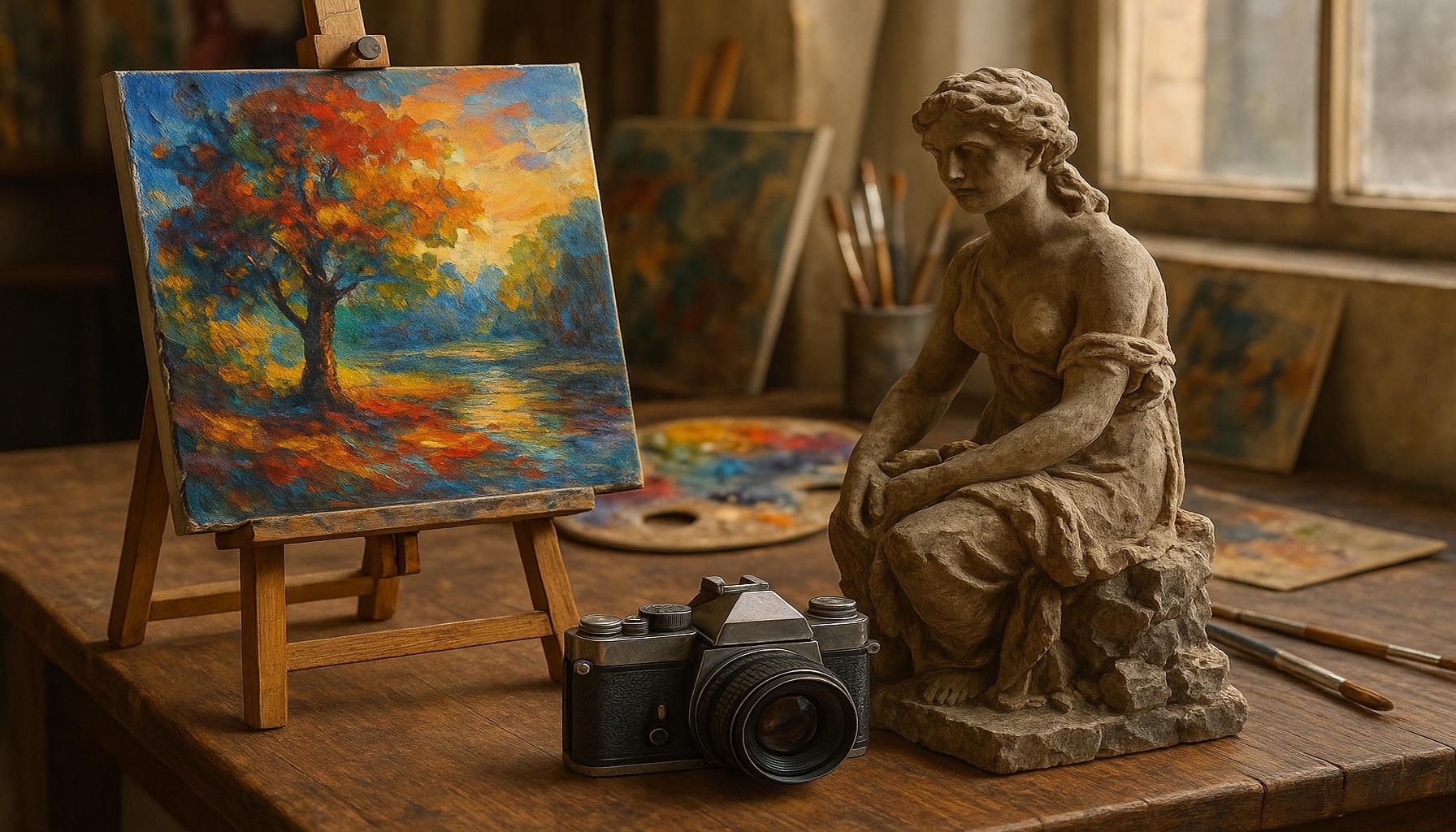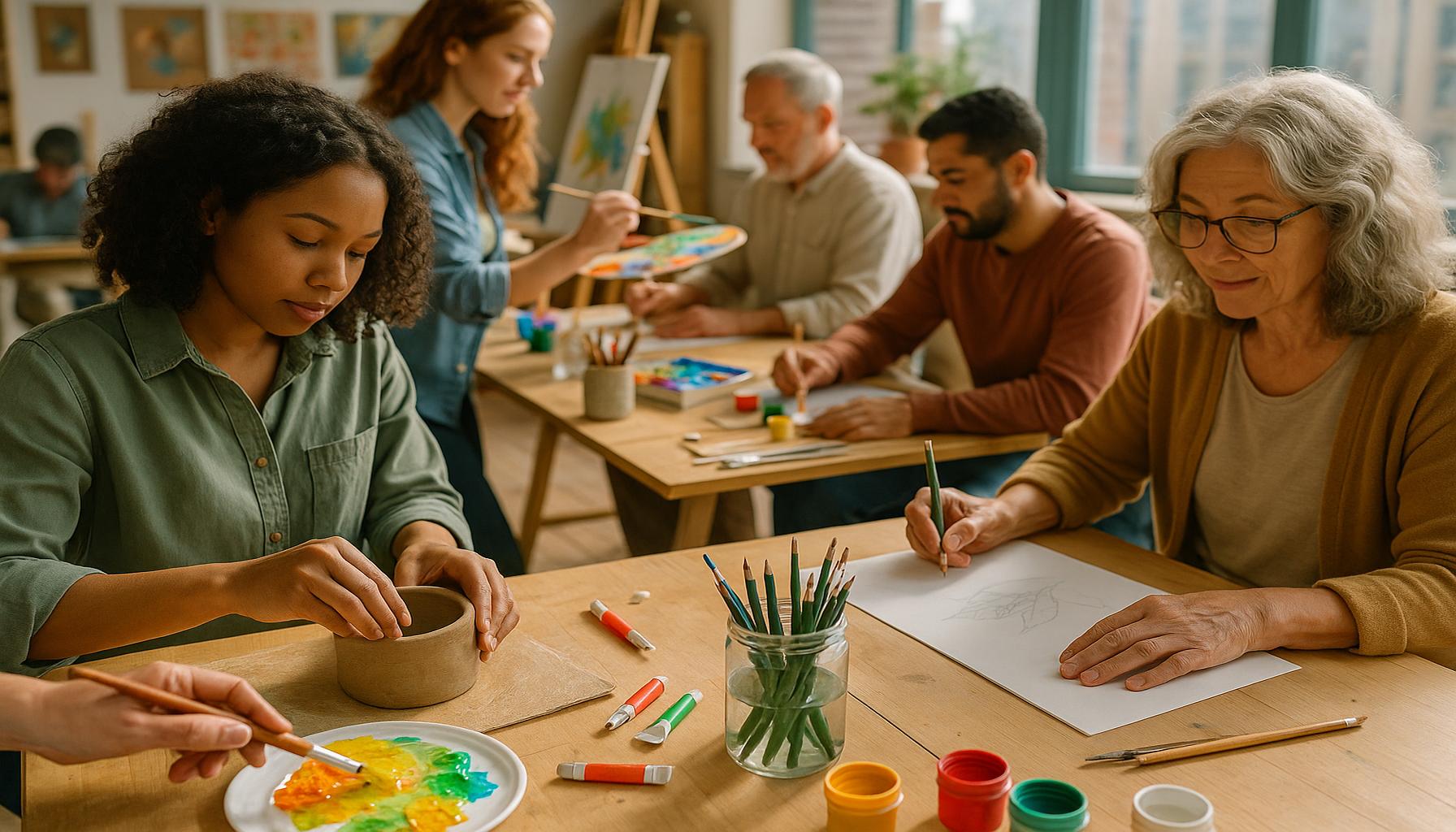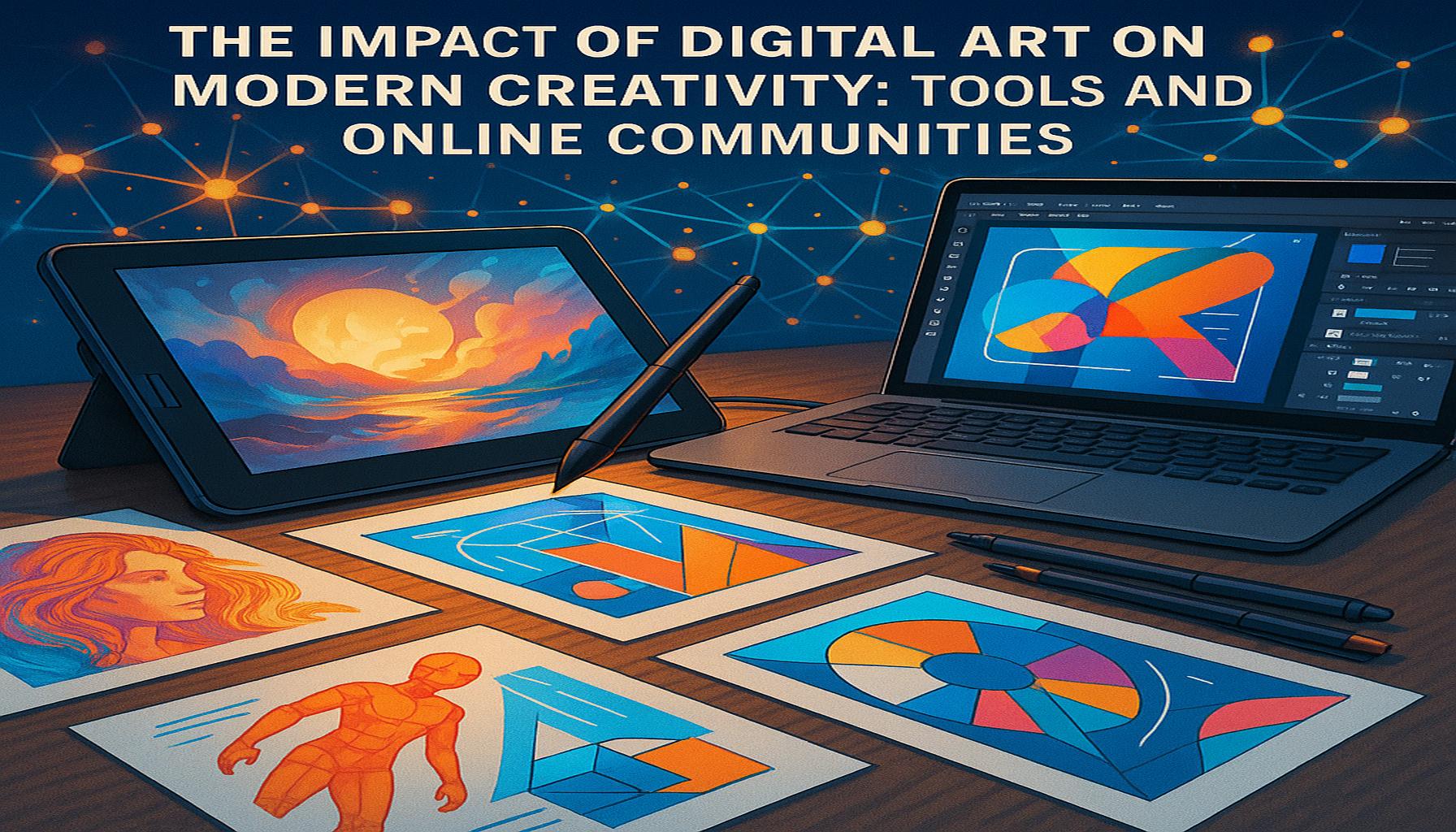The Impact of Artistic Hobbies on Education: Fostering Creativity in New Generations
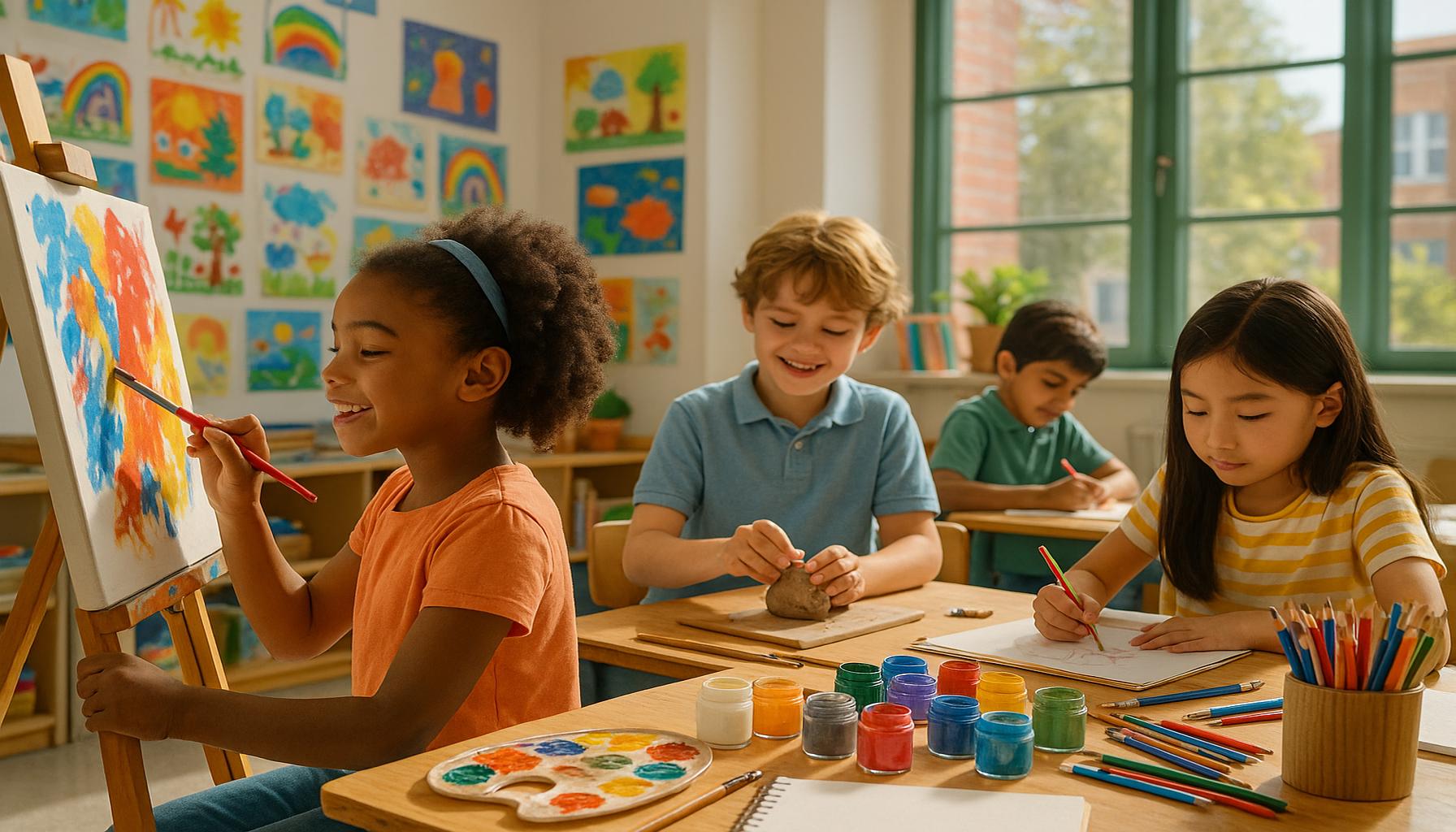
The Impact of Artistic Pursuits on Education
In an era marked by technological advancement and rapid societal changes, nurturing creativity among young learners has become paramount. Engaging in artistic hobbies can profoundly impact educational experiences, equipping students with vital skills that are increasingly important in both academic and professional spheres.
Numerous studies underscore the benefits of artistic pursuits. For instance, research conducted by the American Psychological Association reveals that involvement in creative activities is linked to enhanced critical thinking skills. Students who participate in the visual arts, such as painting or sculpture, are often better able to analyze situations and evaluate outcomes, as these activities require them to make subjective decisions and reflect critically on their work.
Moreover, artistic hobbies significantly enhance problem-solving abilities. For example, a high school theatre program may ask students to devise a unique solution to a staging issue, fostering innovative thinking and adaptability. This experience not only prepares students for similar challenges in real life but also builds their resilience—a quality essential for success in today’s complex world.
Participating in the arts also contributes to emotional well-being. Engaging in creative expression allows students to articulate their emotions, developing skills that enable them to navigate personal challenges more effectively. Activities such as creative writing or music can serve as outlets for self-expression, promoting mental health and reducing anxiety. For instance, students who write poetry may find solace in exploring complex feelings, thus enhancing their emotional intelligence.
The collaborative nature of many artistic disciplines, including performing arts like dance and drama, further promotes teamwork and collaboration. Group projects, such as producing a play or choreographing a dance routine, require individuals to work together towards a common goal, teaching them the importance of communication and compromise—crucial skills in any career path.
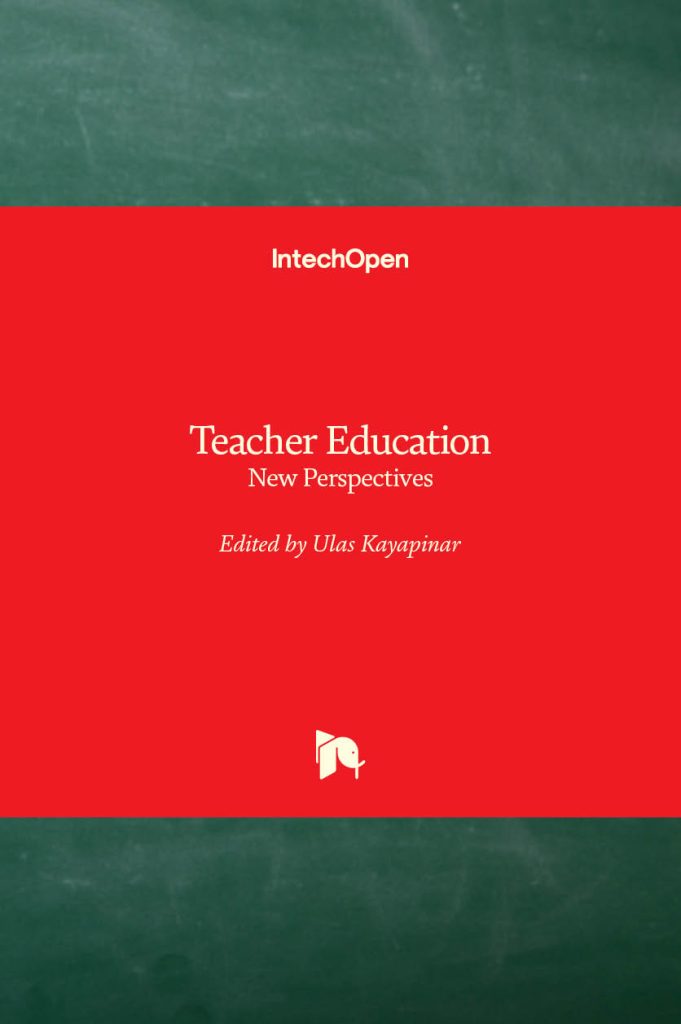
As educators and caregivers aim to weave creativity into the fabric of education, various artistic avenues emerge as promising opportunities. From visual arts like photography and traditional painting to the enchantment of performing arts through music and theatre, and the written word’s power in literature and creative writing, these pursuits provide essential outlets for exploration and expression.
Ultimately, by actively integrating artistic hobbies into educational frameworks, schools can cultivate environments that celebrate creativity, preparing students for both academic challenges and life’s intricate realities. This innovative approach not only paves the way for a future of thinkers and innovators but also empowers the next generation to rise and meet the hurdles of an ever-evolving world head-on.
DISCOVER MORE: Click here to elevate your culinary skills
Exploring the Role of Artistic Hobbies in Education
Artistic hobbies serve as crucial avenues through which students can explore and express their creativity. Engaging in these pursuits not only enriches their educational experiences but also assists in the development of a myriad of competencies. According to the National Endowment for the Arts, students who regularly engage in artistic activities show higher academic performance and motivation levels compared to their peers who do not.
One of the most significant advantages of incorporating artistic hobbies into education is the enhancement of creative thinking. Different art forms challenge students to approach problems from varied angles, cultivating an inventive mindset. By participating in artistic endeavors, students learn to transform abstract ideas into tangible concepts. For example, a student involved in graphic design must visualize and create a product that communicates a message effectively. This process ultimately develops their ability to think creatively, a skill that is increasingly sought after in various professional fields.
Moreover, artistic hobbies also foster cultural awareness and appreciation. Exposure to diverse art forms—from traditional Native American crafts to contemporary street art—enriches students’ understanding of different cultures and perspectives. This broadening of horizons can be particularly beneficial in the United States, a melting pot of cultures where students can learn from one another’s experiences. In art classes, discussions around cultural significance allow students to embrace diversity, thereby cultivating empathy and open-mindedness.
In addition to creative thinking and cultural awareness, artistic hobbies promote self-discipline and time management skills. Crafting a piece of art, composing a song, or rehearsing a dance routine requires a significant investment of time and dedication. Faced with tight deadlines, students must learn to prioritize their commitments and manage their time effectively. Often, this hands-on experience translates into improved academic performance as students apply the same discipline to their studies. A survey by the Arts Education Partnership indicates that students involved in the arts often have better overall academic success than those without artistic involvement.
Another essential aspect of engaging in artistic hobbies is their role in fostering self-confidence. Presenting artwork or performances to an audience encourages students to celebrate their unique voices and talents. Whether it’s displaying their artwork in a gallery or participating in a school play, these experiences can significantly boost a student’s self-esteem. This growth can create a positive feedback loop; as students gain confidence in their artistic ability, they are more inclined to tackle challenges outside of their creative pursuits.
- Creative thinking enhancement
- Cultural awareness and appreciation
- Self-discipline and time management skills
- Boosting self-confidence
As educational institutions strive to develop well-rounded individuals capable of navigating future challenges, it is evident that integrating artistic hobbies into curricula can play a vital role. By embracing creativity in education, schools can equip students not just with knowledge but also with the tools necessary for a successful and fulfilling life.
The Role of Artistic Hobbies in Developing Critical Skills
Artistic hobbies are more than just enjoyable pastimes; they serve as powerful tools in educational settings, fostering creativity and enhancing critical skill development among new generations. Engaging in artistic activities such as painting, music, and creative writing can significantly boost a child’s cognitive abilities, problem-solving skills, and emotional intelligence. Research has shown that students who participate in artistic hobbies tend to perform better academically and exhibit improved concentration and discipline, key attributes essential for success in any field.When children immerse themselves in artistic endeavors, they experience a unique form of self-expression that transcends traditional learning methods. This form of engagement encourages innovative thinking, allowing students to approach challenges from diverse perspectives. For instance, participating in group art projects not only fosters teamwork but also enhances communication skills, as students must articulate their ideas and collaborate effectively—a direct parallel to real-world scenarios.Moreover, artistic hobbies have been linked to improved mental health outcomes. Creating art or music serves as an emotional outlet for students, helping them cope with stress and anxiety. This is particularly crucial in today’s fast-paced educational environments where pressure can hinder learning. To further expand on these topics, we can explore the concept of “STEAM” (Science, Technology, Engineering, Art, and Mathematics) education, which integrates artistic creativity with traditional STEM fields. Incorporating art into STEM curricula can lead to more innovative and well-rounded educational experiences. Schools that embrace this holistic approach often find that students not only excel in technical skills but also appreciate the beauty of innovation and design.In summary, the influence of artistic hobbies in education extends beyond mere creativity. These activities enhance critical thinking, improve emotional health, and encourage students to embrace a multidisciplinary approach. As we continue exploring this rich vein of education, we’ll uncover how fostering creativity through artistic hobbies can lay a solid foundation for future leaders and innovators.
| Advantage | Description |
|---|---|
| Enhanced Problem Solving | Artistic hobbies foster innovative thinking, enabling students to find creative solutions to complex challenges. |
| Emotional Well-being | Engaging in art provides a vital emotional outlet, helping students manage stress and anxiety. |
As we delve deeper into the impact of artistic hobbies in education, their multifaceted benefits are becoming increasingly evident. By embracing creativity in education, we nurture not only talented artists but also well-rounded, innovative thinkers ready to tackle the challenges of tomorrow.
DISCOVER MORE: Click here to dive deeper
The Interconnection Between Artistic Hobbies and Academic Performance
In recent years, the relationship between artistic hobbies and academic performance has gained considerable attention among educators and researchers alike. A growing body of evidence suggests that students who engage in artistic activities not only develop creative skills but also achieve better grades across various disciplines. A report from the Arts Education Partnership reveals that students with a strong background in the arts tend to score higher on standardized tests, indicating that creativity may play a significant role in enhancing cognitive development.
One notable example is the integration of arts into STEM (Science, Technology, Engineering, and Mathematics) education, commonly referred to as STEAM. By incorporating artistic elements into these core subjects, educators cultivate an environment where innovation and cross-disciplinary thinking flourish. For instance, architects employ artistic principles when designing buildings, merging aesthetics with functionality. This approach not only instills a passion for learning but also prepares students for future careers where creativity and analytical thinking intersect.
Furthermore, artistic hobbies can also serve as a powerful therapeutic tool for enhancing students’ emotional well-being. Participation in creative activities, such as painting or drama, has been shown to alleviate stress and anxiety levels, contributing positively to a student’s overall mental health. A study published in the Journal of Applied Psychology found that students involved in arts programs reported feeling more engaged and satisfied with their school experience. Consequently, this emotional stability can lead to improved focus and resilience during academic challenges.
Cultivating Collaborative Skills Through Artistic Endeavors
Artistic hobbies also play an integral role in developing collaboration and communication skills. Group projects, such as theater productions or mural painting, require students to work effectively with peers, thereby fostering teamwork and interpersonal relationships. These experiences provide opportunities for students to navigate differing opinions, negotiate ideas, and build consensus—all critical skills in today’s collaborative workforce. Research indicates that employers increasingly value candidates who possess strong collaborative abilities, making these artistic pursuits essential in preparing students for future success.
Bridging Technology and Creativity
As technology continues to permeate education, artistic hobbies are evolving to incorporate digital platforms, creating new opportunities for students to express their creativity. Digital art, music production, and coding for creative projects are just a few examples of how technology intersects with the arts. Educational institutions that provide access to these cutting-edge tools empower students to experiment and innovate in ways previously unimaginable. Moreover, learning to navigate these technological tools cultivates digital literacy—an essential skill in the 21st-century workforce.
In an era where technology and creativity are intertwined, schools that advocate for artistic pursuits in education not only encourage creativity but also prepare students for an increasingly complex world. The cross-disciplinary benefits of participating in artistic hobbies create a multifaceted educational experience that aligns with future careers, societal needs, and personal development.
- Strengthening the connection between arts and academic performance
- Innovating with the integration of STEAM education
- Enhancing emotional well-being through creative activities
- Cultivating collaboration and communication skills
- Bridging technology and creativity for future-ready students
DISCOVER MORE: Click here to learn about the evolution of crafting
Conclusion: Embracing the Arts for a Brighter Educational Future
In conclusion, the integration of artistic hobbies into educational frameworks presents a transformative opportunity for fostering creativity in new generations. As explored throughout this article, the interrelationship between arts and academics enhances both cognitive development and emotional well-being, enabling students to excel not only in creative realms but also in standardized testing and critical thinking.
The incorporation of artistic pursuits, particularly through innovative STEAM programs, empowers students to engage with their education more deeply while preparing them for careers where both creativity and analytical skills are paramount. This cross-disciplinary approach not only promotes collaboration and communication but also instills a sense of confidence in students as they navigate a complex world increasingly reliant on integrated skills.
Moreover, as technology continues to bridge the gap between traditional and contemporary artistic expression, educational institutions that embrace this evolution will cultivate a generation that is not only creatively adept but also digitally literate. The importance of these skills cannot be overstated, as they lay the groundwork for future-ready professionals equipped to tackle the challenges of tomorrow.
Ultimately, by recognizing and harnessing the impact of artistic hobbies on education, we can unlock the potential of students across the nation, ensuring they emerge as well-rounded individuals poised to contribute meaningfully to society. As we advocate for a more robust inclusion of the arts in education, we pave the way for a brighter, more creative future.
